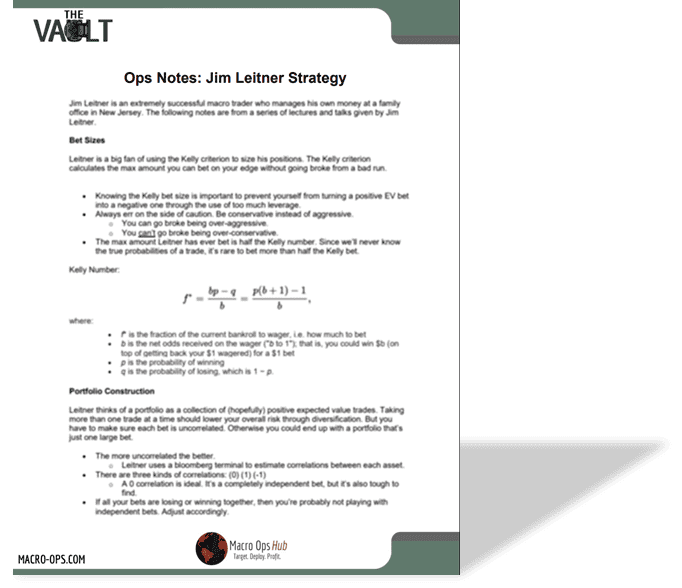Jim Leitner On Sizing Bets & Investment Portfolio Construction
The following are notes from various lectures Jim Leitner has given on his investment strategy and process.
- Knowing the Kelly bet size is important to prevent yourself from turning a positive EV bet into a negative one through the use of too much leverage.
- Always err on the side of caution. Be conservative instead of aggressive.
- You can go broke being over-aggressive.
- You can’t go broke being over-conservative.
- The max amount Leitner has ever bet is half the Kelly number. Since we’ll never know the true probabilities of a trade, it’s rare to bet more than half the Kelly bet.
where:
- f* is the fraction of the current bankroll to wager, i.e. how much to bet
- b is the net odds received on the wager (“b to 1”); that is, you could win $b (on
top of getting back your $1 wagered) for a $1 bet - p is the probability of winning
- q is the probability of losing, which is 1 − p.
Portfolio Construction
Leitner thinks of a portfolio as a collection of (hopefully) positive expected value trades. Taking more than one trade at a time should lower your overall risk through diversification. But you have to make sure each bet is uncorrelated. Otherwise you could end up with a portfolio that’s just one large bet.
- The more uncorrelated the better.
- Leitner uses a bloomberg terminal to estimate correlations between each asset.
- There are three kinds of correlations: (0) (1) (-1)
- A 0 correlation is ideal. It’s a completely independent bet, but it’s also tough to find.
- If all your bets are losing or winning together, then you’re probably not playing with independent bets. Adjust accordingly.
Example:
The Kelly bet says to bet 30% of your money. You use half of that for safety, so now it’s down to 15%. Divide that 15% by 10 to get total portfolio level risk of 1.5% per trade.
For more on how Jim Leitner finds and manages his trades, along with his actual trade examples, enter your email below. You’ll receive our full notes on Jim Leitner’s investment strategy.:






